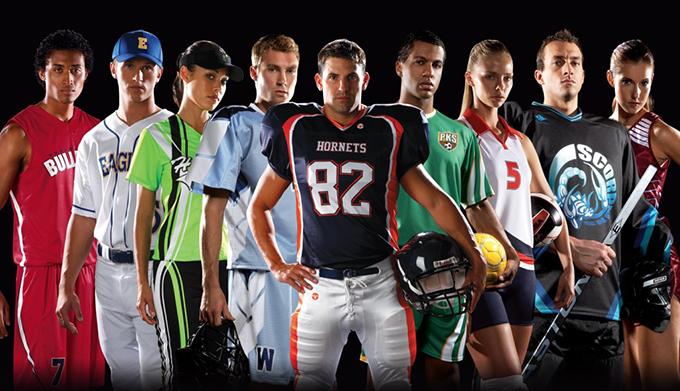On July 1, college athletics stepped into a new era marked by sweeping changes to rules, regulations, and governance that promise to reshape the landscape of collegiate sports. As institutions, conferences, and athletes adjust to unprecedented shifts, Inside Higher Ed examines the implications of this uncharted territory for the future of college athletics. From name, image, and likeness policies to evolving transfer regulations, the developments effective this summer signal a transformative moment for one of higher education’s most visible and contested arenas.
College Athletics Faces New Regulatory Landscape Starting July 1
Starting July 1, college athletics programs across the nation must navigate a dramatically altered regulatory environment shaped by recent policy reforms. These changes, introduced to enhance transparency and athlete welfare, compel institutions to adopt stricter compliance measures and redefine the role of athletic departments in governing student-athlete participation. Among the most significant adjustments are newly mandated reporting protocols, increased oversight of recruitment practices, and updated eligibility requirements designed to promote fairness and integrity within collegiate sports.
Key aspects of the regulatory overhaul include:
- Enhanced financial disclosure from athletic programs.
- Expanded protections for athlete health and safety.
- Revised transfer rules allowing greater athlete mobility.
- Mandatory education programs on compliance and ethics.
| Aspect | Previous Rule | New Rule (Effective July 1) |
|---|---|---|
| Financial Reporting | Voluntary disclosure | Mandatory quarterly reports |
| Transfer Eligibility | One-year sit-out period | Immediate eligibility |
| Health & Safety | Basic oversight | Comprehensive monitoring & concussion protocols |
Financial Implications and Compliance Challenges for Institutions
The ripple effects from the new policies taking shape on July 1 pose significant financial dilemmas for colleges and universities nationwide. Athletic departments are bracing for budgetary shifts as they navigate the complexities of compensating student-athletes in ways previously uncharted. Institutions face the dual challenge of reallocating funds to support Name, Image, and Likeness (NIL) arrangements while ensuring compliance with NCAA regulations and state laws, which vary widely. This patchwork of rules demands increased administrative oversight and potentially new roles focused solely on NIL governance.
- Increased Operational Costs: Hiring compliance officers and legal advisors.
- Revenue Distribution Dilemmas: Balancing payments among athletes without disrupting existing scholarship models.
- State-by-State Regulation Complexity: Managing diverse NIL policies across multiple jurisdictions.
- Monitoring and Reporting: Implementing systems to track transactions and endorsements accurately.
To frame the financial stakes, the following table illustrates potential budget reallocations for mid-sized athletic programs attempting to integrate NIL compliance frameworks into their operational model:
| Expense Category | Estimated Annual Cost | Impact on Scholarship Budget | |||||||||||||||||||||||||||
|---|---|---|---|---|---|---|---|---|---|---|---|---|---|---|---|---|---|---|---|---|---|---|---|---|---|---|---|---|---|
| Compliance Staff Salaries | $150,000 | -5% | |||||||||||||||||||||||||||
| Legal Consultation Fees | $75,000 | Impact on Student-Athletes and Recruitment Strategies
With the landmark changes taking effect on July 1, student-athletes are experiencing unprecedented control over their athletic and academic paths. The ability to capitalize on name, image, and likeness (NIL) rights fundamentally shifts the power dynamics, allowing athletes to monetize their personal brands while still in college. This newfound autonomy has also led to a reevaluation of traditional recruitment tactics, prompting institutions to adopt more holistic and transparent approaches. Players now weigh endorsement potential alongside program prestige, forcing recruiters to innovate beyond conventional scholarships and facilities offerings. Recruitment strategies have quickly adapted to this evolving landscape. Coaches and recruiters are leveraging digital platforms and social media to engage athletes directly, while compliance teams navigate complex NIL agreements on behalf of their programs. The competitive advantage now extends to teams that can provide comprehensive support systems-ranging from marketing guidance to legal assistance-highlighting a shift from singular athletic focus to multi-dimensional career development.
Recommendations for Navigating Transition and Ensuring Competitive AdvantageAs the landscape of college athletics shifts dramatically, institutions must adopt strategic approaches to maintain relevance and competitive advantage. Stakeholders are urged to focus on flexible compliance policies that can adapt quickly to emerging NIL (Name, Image, Likeness) regulations and shifting player recruitment dynamics. Schools should also invest in robust educational programs that prepare athletes not only for competitive play but for brand management and financial literacy-critical skills in the evolving marketplace. Collaboration between athletic departments, compliance officers, and legal advisors will be essential to staying ahead of regulatory challenges while maximizing opportunities for student-athletes. To illustrate key priorities, consider the following strategic focal points:
To ConcludeAs July 1 marks a pivotal moment for college athletics, the landscape stands poised for profound transformation. With new regulations and evolving dynamics unfolding, institutions, athletes, and fans alike must navigate the uncertainties ahead. Inside Higher Ed will continue to monitor these developments, offering in-depth analysis and reporting as college sports enter this uncharted territory.
Add A Comment
|





